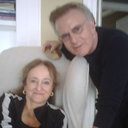Skin cancer chemoprevention: strategies to save our skin.
Ključne riječi
Sažetak
There are over 1 million cases of skin cancer diagnosed yearly in the United States. The majority of these are nonmelanoma (NMSCs) and are associated with chronic exposure to ultraviolet light (UV). Actinic keratosis (AK) has been identified as a precursor for SCC, but not for BCC. AKs are far more common than SCC, making them excellent targets for chemoprevention. Cancer chemoprevention can prevent or delay the occurrence of cancer in high-risk populations using dietary or chemical interventions. We have developed strategies that have rational mechanisms of action and demonstrate activity in preclinical models of skin cancer. Promising agents proceed to phase I-III trials in subjects at high risk of skin cancer. UV light induces molecular signaling pathways and results in specific genetic alterations (i.e., mutation of p53) that are likely critical to skin cancer development. UVB-induced changes serve as a basis for the development of novel agents. Targets include inhibition of polyamine or prostaglandin synthesis, specific retinoid receptors, and components of the Ras and MAP kinase signaling pathways. Agents under study include: epigallocatechin gallate (EGCG), a green tea catechin with antioxidant and sunscreen activity, as well as UVB signal transduction blocking activity; perillyl alcohol, a monoterpene derived from citrus peel that inhibits Ras farnesylation; difluoromethylornithine (DFMO), an inhibitor of ornithine decarboxylase and polyamines; retinoids that target retinoid X receptors and AP-1 activity; and nonsteroidal anti-inflammatory agents that inhibit cylooxygenase and prostaglandin synthesis. We performed a series of Phase I-II trials in subjects with multiple AK. For example, a phase II randomized trial of topical DFMO reduced AK number, suppressed polyamines, and reduced p53 protein. Our goal is to develop agents for use in combination and/or incorporation into sunscreens to improve chemoprevention efficacy and reduce skin cancer incidence.


